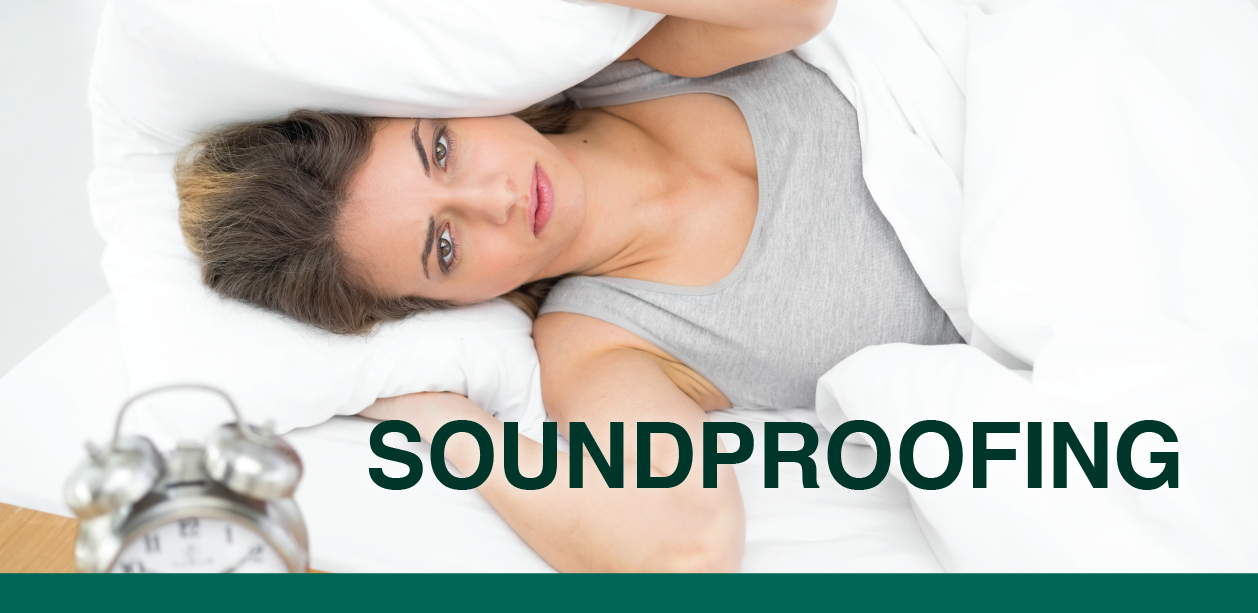All About Soundproofing

ALL ABOUT SOUNDPROOFING.
From bedroom DJs and pounding footsteps to the arrival of a new baby, domestic noise pollution can cause misery. In this post we look at the different options for sound proofing and the best ways to approach your project.
Which type of noise pollution?
Firstly, it is important to recognise that there are two different types of sound that need to be targeted by different materials. The first is airborne sound created by voices, radios or televisions etc. The second is impact noise, which is harder to disguise. This could be caused by things like walking on floorboards, scraping chairs or DIY.
Ultimately making a room soundproof results in stopping or reducing soundwaves from entering by insulating properly and creating more barriers for it to travel through. As these different types of noise respond differently to soundproofing, the best solution is to use a variety of materials and where possible increase the density of surfaces.
Building Regulations
Given the stress domestic noise pollution can cause, it is understandable that the Building Regs set out clear requirements for soundproofing standards for new homes and conversions in Part E (Resistance to Sound). It covers dividing walls and floors, and also requires insulation internally to protect bedrooms from noise pollution.
The Regs, which cover England and Wales, are split into two sections:
- E1 looks at protection from noise from adjoining buildings including flats, terraces and semis
- E2 deals with sound transmission within the home itself
The Regulations also divide sound into airborne sound and impact sound:
The minimum level of airborne sound resistance for dividing walls or floors between homes is 45dB (decibels) in new builds and 43dB in conversion projects. This level should easily cut out normal levels of talking, TV and music playing.
Under the regulations, the internal airborne sound resistance inside any dwelling must be a minimum of 40dB. It applies to walls and upper floors between bedrooms and other rooms, with the exception of walls that have doors in them and walls to en suite bathrooms.
For impact sound such as footsteps, jumping and dropped objects, a maximum impact sound transmittance level of 62dB is set for floors and stairs in new builds. A maximum of 64dB is set for conversion projects.
Soundproofing Walls
It is much easier to soundproof a building or room when it has been a consideration from conception because all materials can be chosen with that purpose in mind and extra space can be created, rather than added. Generally, porous material is better at absorbing sound, so if you’re thinking about soundproofing qualities from the initial build this is a consideration when purchasing bricks or blocks.
If you are retro-fitting a room, adding specialist sound grade plasterboard when drylining internal surfaces will also improve offer enhanced levels of sound performance by offering a greater density, making it ideal for residential applications.
Dual action insulation
There are also a number of good all-round insulation products such as mineral wool and fiberglass insulation that can be used in floors, partitions and walls. Acoustic Roll is a lightweight, flexible, resilient and non-combustible flexible glass mineral wool quilt, which provides a high level of sound absorption, whilst also improving the thermal and fire performance. Likewise, Rock Wools can be used for thermal, acoustic and fire insulation in multiple applications including floors, walls, roofs and industrial applications.
Need help?
There are many tutorials online and video websites on how to effectively soundproof if you would like to do it yourself. Or contact your local Lords branch and our helpful counter team will be happy to advise on the right product for your project. Branch finder with contact details can be found here.















